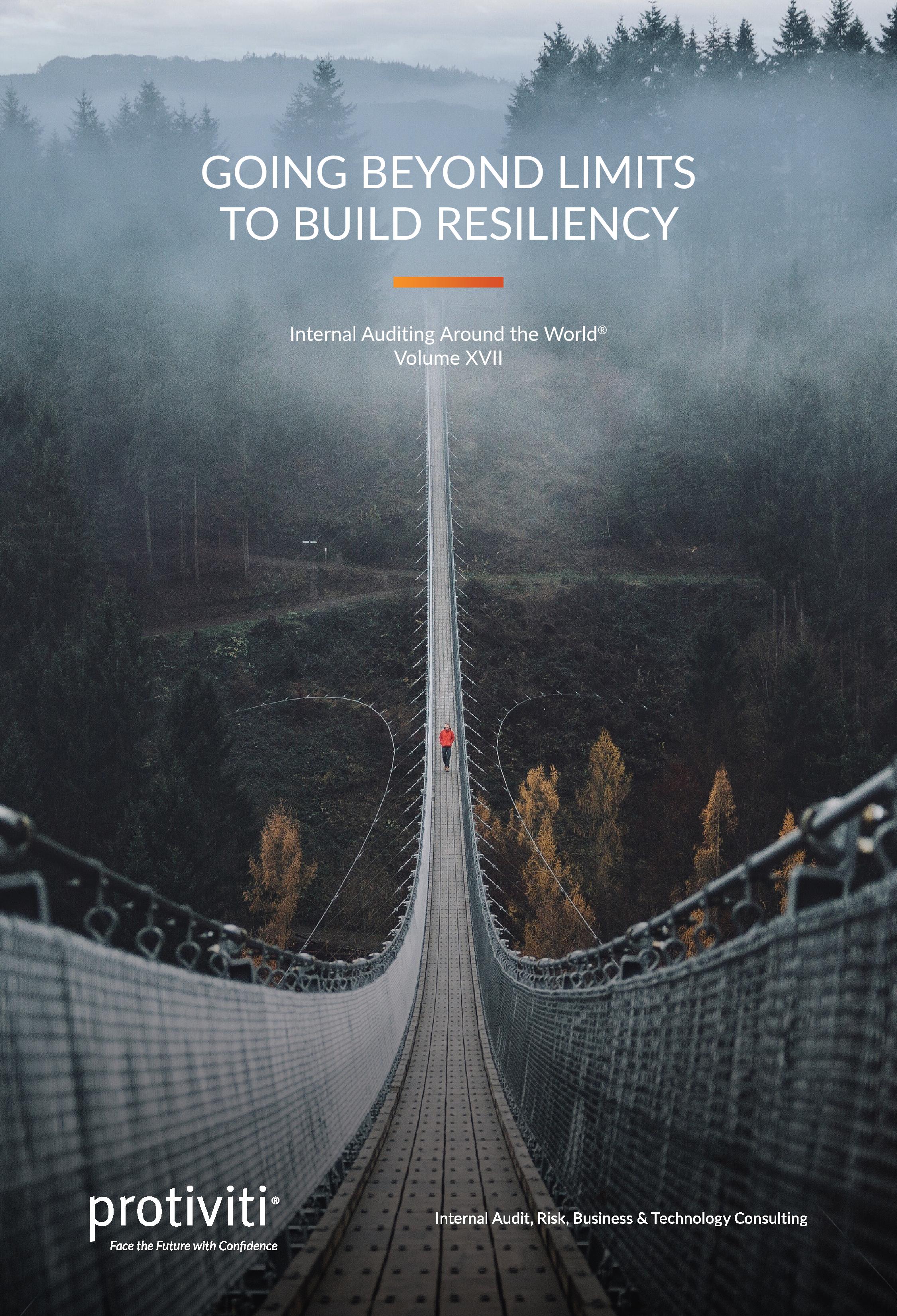Internal Auditing Around the World: Volume 17

Going Beyond Limits to Build Resiliency
A pivot is a change in strategy without a change in vision.
Internal auditors, by nature, like order and certainty. But the global health crisis has allowed for none of that. Its disruption thrust internal auditors into the uncomfortable position of having to completely abandon or revise their well-thought-out plans and familiar checklists and processes — fast.
They had to pivot — often, multiple times — to ensure they did not falter in providing independent assurance that their organization’s risk management, governance and internal control processes were operating effectively. But many internal audit functions needed to be more agile and flexible than ever before for another critical reason: The business needed their help to survive.
The internal audit organizations most successful at pivoting, and helping the business to do the same, are those that had already embraced next-generation internal audit practices before the COVID-19 pandemic. These functions, which are more agile and technology-enabled, were well-positioned to support the business in new, innovative ways driven by the crisis.
For this edition of Internal Auditing Around the World®, we thought it would be appropriate to focus on the topic of resilience, given everything internal audit teams and their companies have been through lately. More specifically, we asked chief audit executives (CAEs) and their colleagues: “What is internal audit’s role in business resilience?” To summarize their responses: It’s pivotal.
Featured Companies
The organizations profiled in the latest edition represent a cross section of countries and industries, including Booking Holdings, Centene Corporation, DBS Bank, FIS, GlobalFoundries, Grupo Bepensa, Inchcape plc, Knowles Corporation, Masonite International Corporation, stc (Saudi Telecom Company) and Standard Chartered.
The new edition of Internal Auditing Around the World addresses how internal audit functions early into the evolution process have found that changes they’ve made so far — whether it was automating a critical process, expanding analytics capabilities, learning about agile auditing or encouraging an innovative mindset — allowed them to be more adaptable and resilient amid unprecedented disruption. Eleven organizations were interviewed and their experiences dealing with this transformation are presented as case studies in the book.